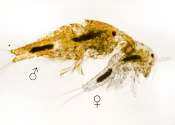Novel gene writing technology enables all-RNA-mediated targeted gene integration in human cells
In a recent study published in Cell, a research team led by Li Wei and Zhou Qi from the Institute of Zoology of the Chinese Academy of Sciences has developed an innovative gene-writing technology based on retrotransposons. ...









